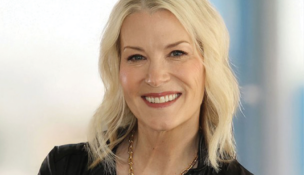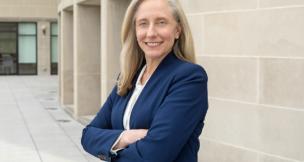Building equity
Banks, credit unions aim for greater diversity
When BB&T recruited Thomas Ransom, a Black economics student at Hampden-Sydney College, to join its management development program in the late 1990s, he quickly had to pick up the world of banking and its culture.
The Urbanna native says he’d never met a banker before starting at BB&T and certainly didn’t know what moves to make to climb the corporate ladder. He had no one in his family he could talk to about work. But he leaned into his differences, forged professional relationships and learned how to “get comfortable being different.”
Today, as Virginia regional president for Truist Financial Corp. — the Charlotte, North Carolina-based megabank formed in 2019 by the merger of BB&T Corp. and SunTrust Banks Inc. — it’s important to Ransom that Truist helps people who look like him succeed.
“If you haven’t been in that environment, or [you are] in a room where you’re the only one that looks like yourself, it can be a challenge,” he says.
Since 2020, after nationwide outrage following the police murder of George Floyd, a Black man living in Minneapolis, the banking and credit union industry — like much of corporate America — has taken a critical look at itself and how it can broaden its reach in terms of racial and ethnic diversity. Progress has been made, both in leadership positions as well as across the workforce, but in an industry that has been historically run by white male executives, there’s still work to be done, industry executives acknowledge.
In Virginia, three of the largest nation’s banks have Black men as market leaders — Ransom at Truist; Jermaine Johnson, Greater Washington, D.C., and Virginia regional president for Pittsburgh-based PNC Bank; and Victor Branch, Richmond market president for Charlotte-based Bank of America Corp.
“Companies that are more diverse in their workforce and their management … tend to perform better,” says Virginia Bankers Association President and CEO Bruce Whitehurst. “It’s a smart thing.”
A 2020 study from global management consulting firm McKinsey & Co. found companies in the top quartile for ethnic and cultural diversity on their executive teams were 36% more profitable than those in the bottom quartile.
Being intentional
Whether establishing talent pipelines at universities, internal leadership development programs or cultural changes, banks and credit unions are working to broaden their workforces.
“I have seen the industry grow and evolve and change and move in the right direction,” says Branch, adding that Bank of America’s leadership is “committed to creating a diverse and inclusive workspace.”
Bank of America’s 14-person board now includes five women and two Black men. Additionally, 55% of the bank’s national management team includes women and people of color, up from 50% in 2020. About 50% of its workforce of about 217,000 are women. And 49% of the overall workforce is racially or ethnically diverse, up from 45% in 2020, according to the bank’s 2022 annual report.
At Truist, Ransom has played a key role in establishing scholarships, internships and other partnerships with historically Black colleges and universities, such as Virginia State University, where he delivered the fall 2022 commencement speech.
Truist has set a goal of increasing female leadership by 20% and ethnically diverse representation in leadership by 20% by 2025. Additionally, it has set a goal of raising its percentage of ethnically diverse senior leaders to 17.2%.
The bank’s 21-member board of directors of 14 men and seven women includes two Black men, two Black women and one Hispanic woman. In 2021, Truist’s workforce was 62.8% white, 18.7% Black, 10% Hispanic and 5.7% Asian, according to data analytics consultancy GlobalData. Women in 2021 made up 63.5% of all Truist workers but only 28.6% of senior leadership, up from 22.1% in 2019.
PNC Financial Services Group Inc. also is focused on increasing diversity.
In 2020, PNC held two major leadership forums, convening hundreds of the company’s Black executives, during which the company set goals, such as hiring a corporate social responsibility officer.
After the forums, PNC provided more opportunities for mentoring and advocacy and became “more intentional around giving people of diverse backgrounds an opportunity,” Johnson says. Of the leaders who attended the first forum, 25% have been promoted in the past three years, Johnson says, calling it a “real, tangible result” of the bank’s intentions — and success — in diversifying its leadership.
“The word that stood out to me is ‘intentionality,’” he adds. “I think all of our leaders need to be intentional … [to] broaden the workforce, broaden the experience of people who contribute to our effort each and every day.”
In November 2022, PNC’s board established its Special Committee on Equity and Inclusion to assist with oversight of management’s equity and inclusion efforts, externally and internally.
PNC’s 12-member board, which has four female directors, is 25% racially or ethnically diverse, with members including one Black woman, one Hispanic man and one Indian woman. (Another Black director, former Microsoft Corp. executive Toni Townes-Whitly, stepped down from the board this year after she became CEO-elect for Reston-based Fortune 500 government contractor SAIC Inc.)
PNC’s workforce diversity increased slightly from 2020 to 2021, according to a filing with the U.S. Equal Employment Opportunity Commission. In 2021, the bank’s 58,599-person workforce was 59.58% female, with a diversity mix of 65.6% white, 14.8% Black, 10.7% Hispanic and 6.4% Asian in 2021. The year before, PNC had more than 7,000 fewer workers, and its diversity mix was 70.2% white, 14.2% Black, 6.83% Hispanic and 6.3% Asian.
By comparison, the largest bank headquartered in Virginia, McLean-based Capital One Financial Corp., has three Black male directors and three women on its 12-person board. Women made up just under 51% of its 55,943-person workforce in 2022. Capital One’s workforce diversity profile last year was 48.5% white, 20.3% Asian, 18.4% Black and 9.5% Hispanic. The bank’s percentage of Asian employees rose from 18.66% in 2020, while other demographics remained essentially flat.
In 2021, Capital One won numerous national awards recognizing its diversity, inclusion and belonging efforts, including support for workers with disabilities, veterans, LGBTQ+ employees, people of color, women and millennials. The credit card giant’s outreach efforts that year included increased partnerships with HBCUs and expansion of a program aimed at engaging first-generation college students with skills-building.
Reflecting communities
Community banks and credit unions also are stepping up diversity efforts, with many, like Suffolk-based TowneBank, creating internal councils devoted to promoting diversity, equity and inclusion initiatives.
“We recognize that the look of banking in general was that of white men, and so, [it was] really saying we are going to … [focus] on why aren’t we attracting a diverse representation to the bank,” says Denise Counce, the bank’s senior vice president and diversity and inclusion officer.
While there is progress being made, bank officials know there’s still much work to do. At the end of 2022, about 16% of TowneBank’s workforce was racially diverse, up from 15% in 2021, according to a bank proxy report.
In 2020, Newport News-based BayPort Credit Union created a DEI council “to ensure that workplace diversity and inclusion is understood,” says CEO Jim Mears. The credit union also has an employee experience specialist who runs programs in leadership development, a mentoring program and guides education sessions about personal and professional development.
BayPort’s leadership and workforce is becoming more diverse, Mears notes. The bank’s 11-member board is more than 45% racially diverse. Employees of color rose this year to 210 out of 508, or 41%, up from 163, or about 35%, in 2020. Promotions among people of color have increased as well, with more than 50% of promotions going to employees of color this year, up from 27% of 41 promotions in 2018.
Bank workers should reflect the communities they serve, says John Asbury, CEO of Richmond-based Atlantic Union Bankshares Corp.
Atlantic Union had a DEI program before 2020, but after George Floyd’s death, it became clear that it wasn’t enough, Asbury says, so the bank created a DEIB council (the ‘B’ is for belonging), which he chairs. The council manages the bank’s efforts to create a more diverse, equitable and inclusive workplace.
Just one of Atlantic Union’s 12 directors is racially or ethnically diverse, according to its 2023 proxy statement. While the bank has not made its workforce demographics public, Asbury says it’s making progress, but acknowledges, “This is a journey.”
Virginia Business Editor Richard Foster contributed to this story.
r















